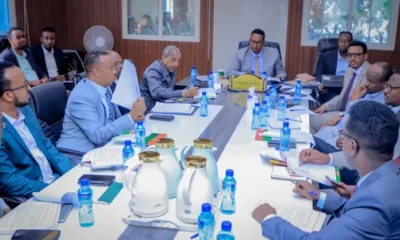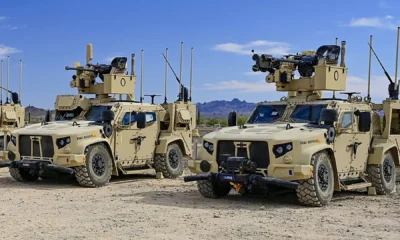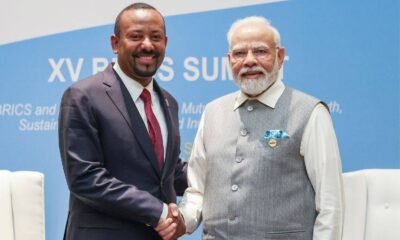Top stories
Strengthening Regional Cooperation: Somaliland-Ethiopia MoU
A Landmark Agreement for Economic and Security Collaboration
The Memorandum of Understanding (MoU) between Somaliland and Ethiopia marks a significant step toward enhancing regional stability and growth in the Horn of Africa. This strategic partnership, formalized in January, aims to boost economic integration, infrastructure development, and security cooperation.
Somaliland and Ethiopia share deep socio-economic ties. The MoU focuses on developing the Berbera port and the Berbera Corridor, linking Berbera to Ethiopia’s Dire Dawa. This initiative promises to streamline trade, reduce logistics costs, and create job opportunities, with investments from DP World transforming Berbera into a logistics hub. Additionally, collaborative infrastructure projects, including roads, bridges, and renewable energy ventures, aim to bolster regional connectivity and sustainable development.
Security is a cornerstone of the MoU, addressing terrorism, piracy, and human trafficking. Joint training programs and intelligence-sharing are expected to enhance border security and maritime safety. These efforts are crucial for safeguarding key maritime routes and ensuring regional stability.
The MoU also emphasizes human capital development through educational and cultural exchanges. Scholarships, joint research programs, and cultural activities aim to strengthen people-to-people ties and foster mutual understanding.
Implementing the MoU presents challenges, including political opposition and logistical hurdles. However, the commitment shown by Somaliland and Ethiopia, along with support from international partners, bodes well for the agreement’s success. This partnership not only benefits both regions but also sets a precedent for collaborative approaches in the Horn of Africa, contributing to broader regional stability and development.
In conclusion, the Somaliland-Ethiopia MoU represents a landmark in regional cooperation, offering a framework for economic, infrastructural, and security collaboration. Its success could serve as a model for other countries in the Horn of Africa, highlighting the importance of pragmatic regional cooperation over political recognition issues.
Top stories
Inside America’s Largest ISIS Strike in Syria in Years

More than 70 targets. Multiple aircraft types. A blunt message. Washington is signaling that attacks on U.S. forces will be answered—hard.
The United States has launched one of its most expansive military operations against the Islamic State in Syria in recent years, signaling a sharp escalation after a deadly attack on American personnel. U.S. officials say the strikes were designed not as deterrence-by-warning, but deterrence-by-punishment.
According to the Pentagon, U.S. forces struck more than 70 Islamic State targets across central Syria in what Defense Secretary Pete Hegseth described as a direct retaliatory operation, formally named Operation Hawkeye Strike. The targets included ISIS fighters, infrastructure, and weapons storage sites. The operation followed a Dec. 13 attack in the Syrian city of Palmyra that killed two U.S. soldiers and a civilian interpreter, and wounded three others.
President Donald Trump, who had publicly vowed retaliation days earlier, framed the strikes as a decisive response rather than the start of a new campaign. Speaking at a rally in North Carolina, he described the operation as a “massive” blow against ISIS, adding that the Syrian government had fully supported the action.
That coordination matters. U.S. officials confirmed the strikes were carried out by F-15 and A-10 aircraft, Apache helicopters, and HIMARS rocket systems, with support from Jordanian fighter jets. United States Central Command said the operation targeted ISIS’s operational depth in central Syria—areas often used to regroup, move weapons, and plan attacks.
The retaliation underscores a central reality of the U.S. mission in Syria: while ISIS no longer controls territory on the scale it once did, it remains operationally lethal. The Palmyra attack highlighted that vulnerability.
According to U.S. and Syrian officials, the attacker was linked to Islamic State and targeted a joint convoy before being killed. Syria’s Interior Ministry later described him as a member of Syrian security forces suspected of harboring ISIS sympathies—an admission that points to the enduring problem of infiltration and radicalization within local structures.
Syria’s current government, led by former rebel factions that ousted Bashar al-Assad after 13 years of civil war, has sought closer cooperation with Washington against ISIS. President Ahmed al-Sharaa’s visit to the White House last month marked a symbolic shift in relations, even as the country remains politically fragile and militarily fragmented.
Roughly 1,000 U.S. troops remain deployed in Syria, tasked with preventing ISIS’s resurgence and supporting local partners. The scale and language of this operation suggest Washington is drawing a clear line: attacks on U.S. forces will trigger overwhelming responses, regardless of the broader geopolitical complexities inside Syria.
“This is not the beginning of a war,” Hegseth said. “It is a declaration of vengeance.”
That framing is deliberate. For ISIS, it signals that survival—not expansion—is once again the priority. For U.S. allies and adversaries alike, it signals that despite global distractions, Syria remains a red line Washington is prepared to enforce with force.
Top stories
Norway Moves to Expand Military Police Powers on Arctic Island

An uninhabited volcanic island. Military police authority. New undersea cables. The Arctic’s calm façade is cracking.
Norway is taking a significant step toward tightening security in the High North, proposing to extend military police authority to the remote Arctic island of Jan Mayen as geopolitical competition intensifies across the region. The move, outlined in a draft regulation released by the Norwegian Ministry of Defense, reflects growing concern that once-peripheral territories are becoming potential strategic flashpoints.
The proposal, now open for stakeholder consultation until next month, would formally expand the scope of Norway’s Military Police Act to include Jan Mayen. Officials argue the change is necessary given an increasingly uncertain security environment, coupled with the likelihood of a stronger Norwegian and allied presence on the island in the future.
Jan Mayen, a volcanic island roughly 300 miles east of Greenland, is uninhabited but far from insignificant. It hosts a combined meteorological and military outpost staffed by a small, rotating contingent of Norwegian armed forces personnel. The island also contains an airstrip used intermittently for military flights and logistical supply missions. Under the proposed regulations, the station commander would be empowered to act as a military police authority, with the legal right to intervene to maintain security and prevent or stop violations of the law.
While Norwegian officials frame the proposal as a legal update rather than a militarization push, the timing is notable. In February, Oslo announced plans to construct a new undersea fiber-optic cable linking mainland Norway with both Svalbard and Jan Mayen — a move widely seen as strengthening critical communications infrastructure in the Arctic.
Jan Mayen has already drawn international attention. In 2020, a visit by U.S. Air Force personnel assessing whether C-130J Super Hercules transport aircraft could land on the island prompted a sharp response from Russia’s Foreign Ministry, which described the inspection as “alarming” and accused Norway of escalating military activity aimed at destabilizing the region.
That sensitivity has only grown. A recent report by the Arctic Institute warned that Svalbard — another Norwegian Arctic territory — could become vulnerable to confrontation with Russia amid rising military competition in the High North. As climate change opens new sea routes and access to resources, Arctic territories once viewed as strategically marginal are being re-evaluated by global powers.
Yet Moscow is no longer the only concern shaping Nordic security thinking. Last week, Denmark for the first time identified the United States as a potential security risk in its annual intelligence assessment, following President Donald Trump’s repeated expressions of interest in taking control of Greenland.
Norway’s move on Jan Mayen fits into a broader regional recalibration: a quiet acknowledgment that the Arctic is no longer a buffer zone, but a frontline where law, logistics and military readiness are being aligned — before a crisis forces the issue.
Analysis
China’s EUV Breakthrough and the AI Warfare Balance

China’s reported development of a prototype extreme ultraviolet (EUV) lithography machine—a critical piece of technology long monopolized by Western firms—may have implications far beyond commercial competition in chips. Sources say that Chinese scientists, including former engineers from Dutch semiconductor equipment maker ASML, assembled a working EUV prototype capable of generating the extreme ultraviolet light needed to etch the tiny circuits used in advanced semiconductor manufacturing.
This marks a significant step toward Beijing’s goal of self-sufficiency in chip production and could reshape how China participates in the global AI and military competition.
Why EUV Matters for AI and Military Power
EUV lithography machines are essential for producing the most advanced chips that power artificial intelligence models, data centers, and high-performance computing—technologies increasingly central to AI-driven military systems and defense capabilities. These chips are a core enabler of autonomous systems, real-time battlefield decision-making, and advanced signal processing. Without access to EUV, a country is effectively shut out of producing the hardware foundations of cutting-edge AI.
For years, export controls by the United States and its allies have restricted China’s access to EUV machines and advanced AI chips precisely because of their dual-use nature—civilian but also critical for military systems. These controls are intended to slow China’s progress in military applications of AI and maintain Western technological superiority.
China’s first EUV prototype suggests it could circumvent some layers of that control, potentially accelerating its ability to internally produce high-end semiconductors that drive AI advances in both commercial and military domains. While the prototype is not yet producing chips, its ability to generate EUV light is a milestone that many analysts believed was years away.
The AI Arms Race and Global Military Balance
Advanced semiconductors are not a luxury—they are strategic military assets. In modern warfare, AI-enabled systems are proliferating rapidly: autonomous drones, sensor networks, real-time command and control, and predictive analytics all depend on advanced chips. As a result, the race for AI superiority overlaps directly with military competition between major powers. Observers often frame this competition as an “AI Cold War,” in which dominance in AI technology and hardware translates into battlefield advantage, deterrence capability, and geopolitical influence.
If China can develop and mass-produce its own advanced chips using domestic EUV technology, it could narrow the technology gap that has so far given the United States and its allies an edge in military AI applications. That includes everything from autonomous systems to real-time battlefield simulations and secure AI-driven cyber defense. The ability to control this part of the supply chain would reduce China’s vulnerability to export controls and strengthen its position in future conflict scenarios where AI plays a decisive role.
Policy and Strategic Implications
For the United States and its partners, this development raises hard questions about the assumptions underlying current export controls and military planning. To date, U.S. efforts have aimed to contain China’s access to critical semiconductor manufacturing tools and advanced AI hardware, seeing this as fundamental to maintaining a strategic advantage across civilian and defense sectors. That strategy is grounded in the belief that access to high-performance computing and AI chips underpins future battlefield success and strategic deterrence.
However, if China continues to close the technological gap—even incrementally—it could force a recalibration of how export controls, multilateral alliances, and technology policy are employed to maintain an AI lead. This shift could also affect allied nations that currently benefit from U.S. chip technology dominance, pushing them to reassess their own semiconductor strategies and defense modernization plans.
Not a Done Deal—Yet
It is important to emphasize that China’s EUV prototype is still not mass-producing chips and remains far less sophisticated than the machines used by industry leaders like TSMC or Intel. Many technical hurdles remain, particularly in optics and production scalability. Critics also note that successfully generating EUV light, while significant, does not automatically translate into full chipmaking capability.
Nevertheless, the development signals that China’s resolve to master the hardest elements of semiconductor manufacturing is stronger than many analysts had expected—underscoring how semiconductor technology is now inseparable from global competition, economic strategy, and military balance.
Conclusion: A New Dimension of the AI Arms Race
China’s reported EUV prototype does not yet rewrite the rules of the global semiconductor landscape, but it does redefine the timeline and stakes. In an era where artificial intelligence increasingly shapes military strategy and operational capability, control over the hardware that fuels AI is no longer a commercial advantage alone—it is a strategic imperative.
As rivals pursue their own national semiconductor goals, the emergence of China’s EUV capabilities could mark the beginning of a more contested, multipolar era in both technology and military power.
Top stories
A Photo of Miss Finland Sparks Racist Accusations

A photo of Sarah Dzafce, the titleholder of Miss Finland 2025, has ignited widespread accusations of racism and drawn significant international backlash from several Asian countries after she was seen making a gesture interpreted as offensive toward Asians. The incident has escalated into a broader political controversy involving government figures and diplomatic protests.
The photograph, which circulated on social media in late November, shows Dzafce pulling the corners of her eyes with her fingers in a pose widely seen as mimicking East Asian features. The original caption on the image — “eating with a Chinese” — was condemned as discriminatory and hurtful by commentators and government officials in Finland and across Asia.
Dzafce, who won the Miss Finland title in September and subsequently competed in the Miss Universe 2025 pageant, initially offered an explanation that she had been alleviating discomfort from a headache and that a friend added the caption. She later issued a public apology on Dec. 8, acknowledging that her actions had caused pain and emphasizing that representing Finland carried a responsibility she did not intend to violate.
Despite the apology, the Miss Finland Organization revoked her crown on Dec. 11, 2025, citing the deep hurt and concern caused both domestically and internationally. The organization stressed that racism and discrimination “have no place” in its values and that the decision was grounded in the responsibilities associated with the role rather than a judgment on her worth as a person. Runner-up Tara Lehtonen was subsequently named the new Miss Finland 2025.
The situation intensified when several Finns Party politicians — members of Finland’s ruling coalition — posted their own images imitating the gesture in an apparent show of support for Dzafce. Those posts drew further criticism and were described as racist and irresponsible by other political figures and critics within Finland. Prime Minister Petteri Orpo intervened directly, issuing formal apologies to Japan, China, and South Korea through Finnish embassy channels and reaffirming Finland’s commitment to inclusion and equality.
The diplomatic implications have been significant. Japan’s government publicly conveyed concerns to the Finnish embassy in Tokyo, expressing expectations for an appropriate response after the offensive social media posts by Finnish politicians. Chief Cabinet Secretary Minoru Kihara underscored the importance of maintaining strong communication and mutual respect between nations.
In addition to political fallout, there have been calls on social platforms for boycotts of travel to Finland and of Finnish companies such as Finnair, reflecting broader public sentiment in parts of Asia. Finnish media and commentators have highlighted the importance of addressing racism not just at the level of individuals but within the broader cultural and political discourse.
Top stories
U.S. Approves $11 Billion Arms Sale to Taiwan
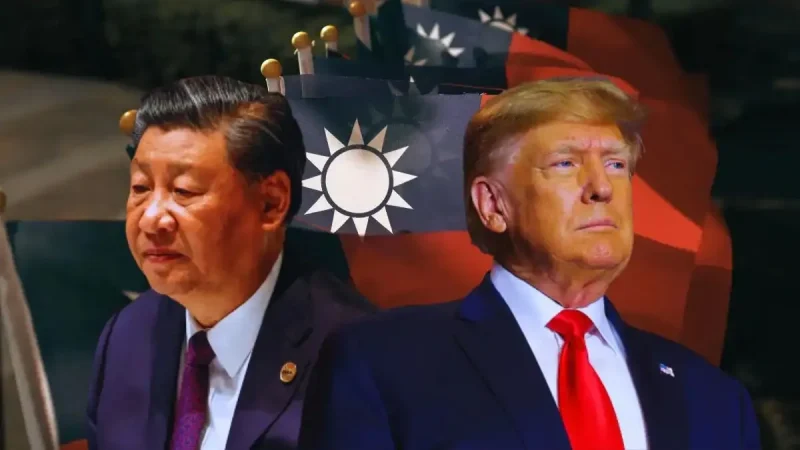
As Chinese warships circle and jets probe Taiwan’s skies, Washington responds with one of its biggest weapons packages in decades.
The United States has approved an $11 billion arms package for Taiwan, Taipei announced Thursday, marking one of the largest proposed weapons sales to the self-governed island as it seeks to deter a potential Chinese invasion.
The package, which still requires approval from the U.S. Congress, includes a wide array of advanced systems such as HIMARS rocket launchers, howitzers, anti-tank missiles, drones, and other military equipment, according to Taiwan’s foreign ministry. If finalized, it would be the second arms sale to Taiwan since President Donald Trump returned to office in January, following a smaller $330 million deal for spare parts and components approved in November.
“This is the second arms sale to Taiwan announced during the Trump administration’s second term, once again demonstrating the United States’ firm commitment to Taiwan’s security,” the foreign ministry said in a statement.
The announcement comes amid lingering questions over Trump’s long-term approach to Taiwan, after remarks during the campaign and early in his presidency raised doubts about Washington’s willingness to defend the island. Despite those concerns, the scale of the latest package sends a clear strategic signal at a time of intensifying military pressure from Beijing.
Taiwan has steadily increased defense spending over the past decade as China has ramped up what analysts describe as “grey-zone” operations—near-daily deployments of military aircraft and warships designed to intimidate without triggering open conflict.
Taipei’s defense ministry said 40 Chinese military aircraft, including fighters, helicopters, and drones, along with eight naval vessels, were detected around the island in a 24-hour period ending early Thursday. Earlier this week, China’s newest aircraft carrier, the Fujian, sailed through the Taiwan Strait.
The size of the proposed sale rivals historic arms packages, including the $18 billion authorized under former U.S. President George W. Bush in 2001, which was later reduced through negotiations. During Trump’s first term, Washington approved roughly $10 billion in arms sales to Taiwan, including $8 billion for fighter jets.
Taiwan’s defense ministry said the latest package would help the island “rapidly build robust deterrence capabilities,” even as officials acknowledge that Taiwan would be heavily outmatched in a full-scale conflict with China and remains reliant on U.S. military support.
President Lai Ching-te’s government has pledged to sharply increase defense spending, aiming to exceed three percent of GDP next year and reach five percent by 2030. Taipei is also seeking up to NT$1 trillion in special funding to upgrade air defenses and expand ammunition production and storage. Those proposals, however, must still pass Taiwan’s opposition-controlled parliament.
For Washington, the arms sale reinforces a long-standing policy of supporting Taiwan’s self-defense without formally committing to direct military intervention. For Beijing, it is likely to be viewed as another provocation. And for Taipei, the message is unmistakable: deterrence, not diplomacy alone, is now the centerpiece of its survival strategy.
Top stories
Senate Passes $900 Billion Defense Bill, Advancing Trump Agenda and Reasserting Congressional Control

The Pentagon gets more money—but less freedom. And buried in the fine print is a shift that could reshape U.S. strategy far beyond Washington.
The U.S. Senate on Wednesday gave final approval to a sweeping $900 billion defense policy bill, clearing the way for President Donald Trump to sign legislation that advances his national security agenda while reasserting Congress’s authority over how military power is used.
The 77–20 vote underscored broad bipartisan agreement on sustaining high defense spending, even as lawmakers imposed new guardrails on the Pentagon.
The bill authorizes roughly $8 billion more than the administration requested for fiscal year 2026, funding submarines, next-generation fighter jets, drones, and missile defense systems, including the much-touted “Golden Dome.” It also grants a 3.8 percent pay raise for all service members, reinforcing congressional support for troop morale amid global instability.
At the same time, lawmakers used the annual National Defense Authorization Act to claw back oversight. One provision pressures the Defense Department to disclose details of U.S. strikes on suspected drug-smuggling boats in international waters, including the release of underlying orders and unedited video footage to Congress.
Failure to comply would trigger a 25 percent cut to Defense Secretary Pete Hegseth’s travel budget—an unusually direct lever aimed at enforcing transparency.
The legislation also blocks the administration from sharply reducing U.S. troop levels in Europe, following Pentagon plans to scale back deployments in Germany, Romania, and Poland. Under the bill, troop levels cannot fall below 76,000 for more than 45 days without consultations with NATO allies and formal certification to Congress that U.S. security would not be compromised.
Despite resistance from some hard-right Republicans, the bill authorizes continued military aid abroad, including $800 million for Ukraine across fiscal years 2026 and 2027, along with additional funding for Israel, Taiwan, Iraq, Somaliland and other partners.
It also codifies several of Trump’s executive priorities, from banning diversity, equity, and inclusion programs at the Defense Department to authorizing active-duty troops at the U.S.–Mexico border and restricting transgender women’s participation in women’s athletics at military academies.
The House approved the bill last week by a wide margin, though not without internal friction. Since then, aviation safety concerns have emerged, particularly over provisions affecting military access to airspace near Ronald Reagan Washington National Airport. Senators Ted Cruz and Maria Cantwell moved separately to advance the ROTOR Act, tightening flight rules in the capital’s crowded skies, with White House backing.
Beyond the headline spending figures, the bill carries broader strategic implications. It rolls back decades-old legal authorizations tied to the 1991 and 2003 Iraq wars and repeals sanctions on Syria under the Caesar Act, signaling a recalibration of legacy policies rather than a simple budget exercise.
Taken together, the legislation reflects a defense posture that is both expansive and more tightly managed—assertive abroad, constrained at home. And quietly, it hints at a wider shift in how Washington views key regions.
The Horn of Africa, long filtered almost exclusively through Mogadishu, is increasingly framed as a competitive theater shaped by Red Sea security, great-power rivalry, and critical supply chains.
In that context, Somaliland’s stability, coastal control, and cooperative posture are becoming harder to ignore. If the NDAA’s provisions are enacted as written, they will mark not a rhetorical turn, but a legal one—potentially the most consequential shift in U.S.–Somaliland relations since 1991. In geopolitics, laws endure longer than statements. That is the signal Washington has just sent.
Top stories
Somaliland Cabinet Maps Risks and Resources
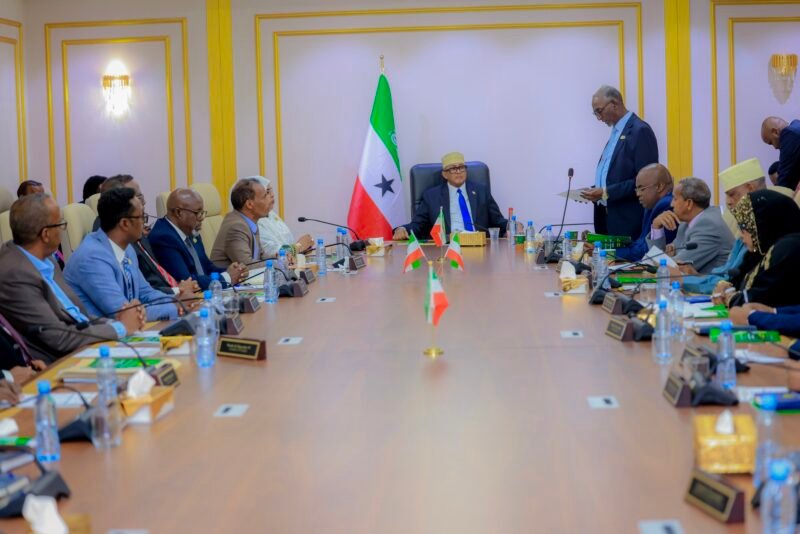
From national security to Dengue fever and mineral wealth, Somaliland’s cabinet laid out a snapshot of a state managing pressure—and planning ahead.
Somaliland’s Council of Ministers on Tuesday reviewed the state of national security, mounting public health pressures, and long-term economic priorities during its 46th session, chaired by President Abdirahman Mohamed Abdullahi “Irro” at the Presidential Palace in Hargeisa.
The Minister of Internal Affairs and National Security, Abdalle Mohamed Arab, told the cabinet that the country’s overall security situation remains stable, with no incidents reported across Somaliland’s regions. His briefing followed a recent ministerial tour of the Salel and Awdal regions, which officials said confirmed calm conditions on the ground.
Economic performance featured prominently in the session. The Minister of Finance reported that government revenue collection for the first 11 months of the year remains aligned with projections set out in the 2025 national budget.
He also updated ministers on outcomes from a high-level development forum in Nairobi, noting ongoing efforts to deepen cooperation with international partners, including the World Bank and the African Development Bank. Modernization of the Berbera Port, in partnership with DP World, was highlighted as a strategic priority to strengthen regional trade links, particularly with Ethiopia.
The Minister of Planning separately briefed the cabinet on the High-Level Development Coordination Forum held in Nairobi on December 9, describing it as a key platform for direct engagement between Somaliland and major international stakeholders, including the United Kingdom, the United States, the United Nations, and Denmark. Discussions centered on Somaliland’s National Development Plan and future cooperation frameworks.
Public health concerns took a more urgent tone. The Minister of Health Development reported a localized outbreak of Dengue fever in the eastern regions, with emergency medical teams deployed to affected areas to provide treatment and public health guidance. He warned that prolonged drought conditions are placing severe strain on the health system, contributing to rising malnutrition, increased risk of infectious diseases, and shortages of essential medical supplies.
On economic diversification, the Minister of Energy and Minerals presented the outcomes of the Somaliland Minerals Expo 2025, held this week in Hargeisa and attended by more than 30 international delegations. Key recommendations included establishing a National Institute for Mining, adopting international laboratory standards, and conducting a comprehensive national mineral survey.
The cabinet stressed that future mining projects must uphold environmental safeguards and ensure meaningful participation by local communities.
Social protection and infrastructure reform were also on the agenda. The Ministry of Labor and Social Affairs presented a communiqué from the recent Social Welfare Conference, outlining a ten-point action plan that includes creating a National Social Welfare Registry System and increasing budget allocations for social services.
Meanwhile, the Minister of Public Works introduced a draft National Land Policy aimed at promoting transparent and equitable land administration to support stability and economic growth.
Additional briefings covered livestock and transport. The Ministry of Animal Husbandry reported that more than 2.7 million animals have been treated but warned that drought continues to threaten livestock health and production.
The Ministry of Transport unveiled a new five-year sector plan and announced the formation of a National Committee tasked with reducing traffic accidents through stricter regulation and public awareness campaigns.
Taken together, the cabinet session painted a picture of a government balancing short-term crises with longer-term structural reforms—seeking to maintain stability while laying groundwork for economic resilience and institutional development.
Top stories
Aid, Trade—and Returns: Somalia–Sweden Talks Shadowed by Deportation Debate

Publicly, the talks were about trade and cooperation. In the background, a sensitive issue loomed: deportations from Sweden to Somalia.
Somali President Hassan Sheikh Mohamud on Tuesday met with a senior Swedish delegation in Mogadishu for talks aimed at strengthening bilateral relations, as Sweden faces growing scrutiny over the deportation of Somali nationals whose asylum claims have been rejected.
The delegation, led by Sweden’s minister for international development cooperation and foreign trade, Benjamin Dousa, held closed-door discussions with the president at the presidential palace. According to a statement from the Somali presidency, the talks focused on expanding cooperation in the economy, trade, and efforts to strengthen state institutions.
“The president of the republic and the minister discussed the bilateral relationship between Somalia and Sweden and ways to further strengthen it, particularly in the areas of the economy, trade and enhancing the capacity of state institutions,” the statement said.
Swedish officials told President Mohamud that Stockholm is prepared to deepen its role in supporting peace and stability in Somalia, including assistance aimed at rebuilding government institutions after decades of conflict.
The visit comes at a politically sensitive moment in Sweden, where deportations of Somali nationals have drawn increased attention. Earlier this week, Sweden’s migration minister, Johan Forssell, said the government would continue enforcing deportations under existing return arrangements with Somalia, despite criticism from opposition parties and civil society groups.
Swedish police data cited by officials show that Somalia had accepted 25 deportees by November, including 14 individuals removed following criminal convictions. The number of forced returns has risen steadily, from six cases in 2021 to 29 in 2023, reflecting tighter migration enforcement policies in Sweden.
The deportations have sparked controversy amid media investigations suggesting development assistance may have been used to facilitate returns. Swedish authorities have denied any such link, saying assistance related to migration is channeled through international organizations, including the International Organization for Migration, and does not involve conditional arrangements.
Somali officials have also pushed back strongly against the allegations. In a statement on Oct. 9, the Office of the Prime Minister described claims of secret or conditional agreements as “false, misleading, and unfounded,” emphasizing that cooperation with Sweden is conducted transparently through formal diplomatic channels and multilateral institutions such as the World Bank and United Nations agencies.
Despite the tensions surrounding migration, Sweden remains a long-standing development and security partner for Somalia. In October, Sweden’s defense minister visited Mogadishu to discuss expanding cooperation on counterterrorism, training, and capacity-building for Somali security forces, underscoring a relationship that extends well beyond the politically charged issue of deportations.
-

 Analysis10 months ago
Analysis10 months agoSaudi Arabia’s Billion-Dollar Bid for Eritrea’s Assab Port
-

 Opinion17 years ago
Opinion17 years agoSomaliland Needs a Paradigm Change: Now or Never!
-
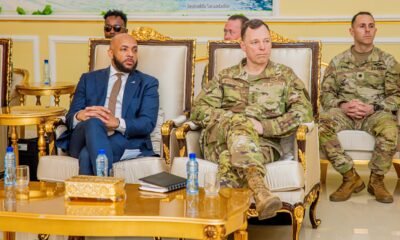
 Interagency Assessment4 days ago
Interagency Assessment4 days agoTOP SECRET SHIFT: U.S. MILITARY ORDERED INTO SOMALILAND BY LAW
-

 ASSESSMENTS9 months ago
ASSESSMENTS9 months agoOperation Geel Exposes the Truth: International Community’s Reluctance to Embrace Somaliland as a Strategic Ally
-
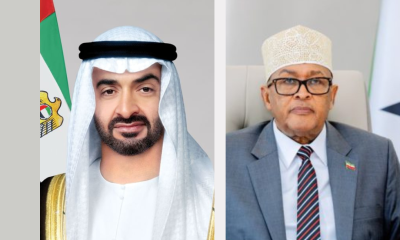
 Somaliland11 months ago
Somaliland11 months agoSomaliland and UAE Elevate Ties to Comprehensive Strategic Partnership
-

 EDITORIAL1 year ago
EDITORIAL1 year agoDr. Edna Adan Champions the Evolving Partnership Between Somaliland and Ethiopia
-
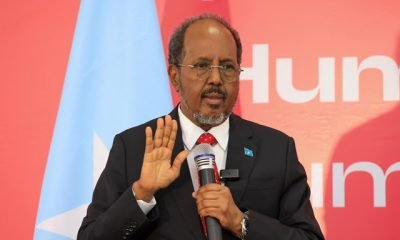
 ASSESSMENTS6 months ago
ASSESSMENTS6 months agoA Critique of the Hassan Sheikh Mohamud Administration and the Halane Enigma
-

 Africa2 years ago
Africa2 years agoHow Somaliland Could Lead the Global Camel Milk Industry


